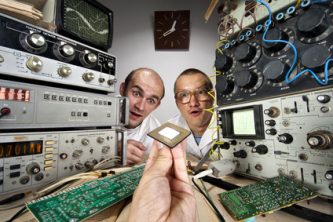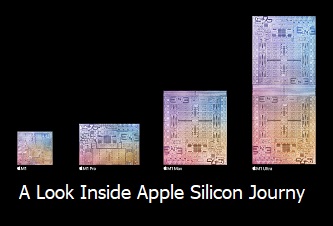In today’s highly competitive market, businesses are continually seeking ways to gain an edge over their rivals. One possible strategy is using Application-Specific Integrated Circuits (ASICs). These specialized chips offer numerous benefits, allowing companies to create products that not only outperform the competition but also operate with better power efficiency and cost-effectiveness.

This article is your guide to understanding ASICs from a strategic point of view: understanding how an ASIC can give your company a competitive edge!
Definition of ASIC
ASICs, or Application-Specific Integrated Circuits, are specialized semiconductor devices designed for specific purposes rather than general applications. By focusing on a singular task or a set of tasks, ASICs offer unparalleled benefits such as energy efficiency and optimized functionality and lower cost.
How ASICs Differ from General-Purpose Integrated Circuits (ICs)

ASICs are different from general-purpose ICs by their inherent nature of being custom-made. This customization allows them to perform designated tasks with greater efficiency than their general-purpose ICs. While the upfront costs for designing an ASIC can be significant, the potential cost savings in the long run often outweigh these initial investments.
Boosting Innovation and Competitive Edge with ASICs
As product developer, you have access to standard-off-the-shelf chips from companies such as NXP, Analog Devices and Infineon. These standard components, which are readily available, are very likely to be also used by your competition to develop a product similar to yours. Based on this assumption, we can therefore conclude that:
As a product designer, your level of innovation is limited to the capabilities of those standard chips, you are using them as a building blocks and therefore, you can only achieve the level of functionality that is possible with these chips.
We can also assume that your rivals have access to the same chips. So, if your competitors are using the same chips, you will end up building similar products with very little differentiation.
By integrating ASICs into your product, your company has the ability to provide innovative features that can effectively distinguish your product offerings from standard options in the market. This competitive edge allows you to stand out and attract customers who are looking for unique and specialized functionalities.
Market leaders in various industries, therefore, turn to ASICs to fine-tune their product performance and fulfill the high demands of competitive markets.
Apple: Apple uses ASICs in their products, such as iPhones and iPads, to provide custom-designed chips like the A-series processors for optimized performance and power efficiency. By utilizing ASICs, Apple can control and enhance the user experience by tailoring the chip’s functionality to meet the specific requirements of their devices. This level of customization not only allows Apple to differentiate their products in the market but also ensures a seamless integration of hardware and software for a superior user experience.

Tesla: Tesla incorporates ASICs in their electric vehicles for various functions, including battery management, autonomous driving capabilities, and infotainment systems. By designing custom ASICs for these specific applications, Tesla can optimize performance, reduce power consumption, and ensure reliable operation in the demanding automotive environment. The use of ASICs in Tesla’s vehicles enables them to deliver cutting-edge technology and features while maintaining high levels of efficiency and safety.
Power Consumption Benefits of ASICs
The adoption of Application-Specific Integrated Circuits (ASICs) can lead to remarkable power consumption benefits for electronic devices. These customized circuits are engineered with a specific application in mind, which allows them to operate with exceptional power efficiency. Their targeted functionality eliminates extraneous circuitry that would otherwise consume unnecessary energy, providing a lean solution that caters precisely to the electrical power needs of the product they’re embedded in.
Cost Savings with ASICs
In addition to power efficiency, ASICs also provide cost advantages for cost. By customizing the design to precisely meet their requirements, companies can reduce production costs and eliminate the need for additional components that are not essential for the product’s functionality. This optimization allows for lower manufacturing expenses, thereby increasing profit margins and making products more competitively priced.
In many cases one ASIC can accommodate the functionally of several IC and thus both saving cost, power and size.
Single Chip Integration Advantages of ASICs (Size Reduction)
The integration of Application-Specific Integrated Circuits (ASICs) into single-chip solutions provides elimination of the need for multiple components.
By integrating multiple functionalities into a single chip, ASICs effectively reduce the need for additional components within a device. This declutters the overall system design, leading to:
- A smaller footprint on the circuit board
- Less inventory to be managed
- Simplified assembly processes
- Enhanced reliability with fewer points of potential failure
Such reductions not only trim down production costs and logistical complexities but also result in lighter and more compact final products, which is an invaluable attribute in many portable and space-constrained applications.
Intellectual Property Protection
Furthermore, ASICs enable businesses to protect their intellectual property and maintain a competitive edge. Since the design is unique to the company, it becomes much more challenging for competitors to replicate or reverse-engineer the technology. This safeguarding of proprietary information and know-how ensures that businesses can maintain their market leadership, preventing rivals from easily replicating their products and eroding their market share.